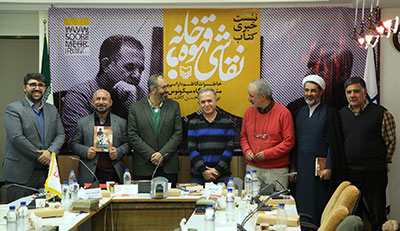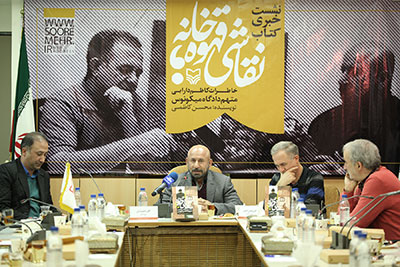Picture Narrative
Two Books
Mohammadali Fatemi
Translated by Natalie Hghverdian
2019-2-12
Iran Oral History Site - During the Fajr Celebration of 2019 and on the eve of the 40th anniversary of the victory of the Islamic Revolution, the activities of two researchers and writer of the Islamic Revolution's Library were highlighted.
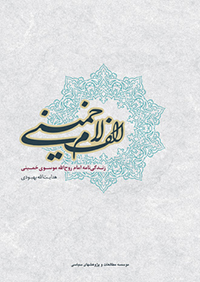
February 5, 2019, and in the final ceremony of the 36th annual book prize festival of the Islamic Republic of Iran, Hedayatullah Behboudi was introduced with his book "Alef Lam Khomeini: The Biography of Imam Rouhollah Mousavi Khomeini" as one of the electorates of the documentary branch in the field of history and geography. He received his prize from, the president, Hojatol Islam ValMuslim Dr. Hassan Rouhani. About the latest books and works of Hedayatullah Behboudi and his views, read this article on the Iran Oral History website:
The history is narration of possibilities
Documentaries are not of the same nature
The essence of narration and documentation of memories is independence

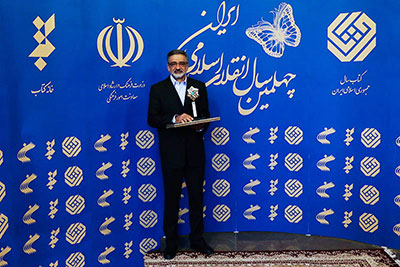
The press conference of the book "The Coffee House Painting: Diary of Kazem Darabi; The Defendant of the Mykonos Court" by Mohsen Kazemi was held on February 4, 2019 in the Department of Art. At the meeting, these points were stated about the book:
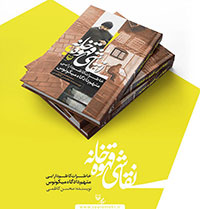
Abdulhamid Qaradaghi, Managing Director of Sureh Mehr Publications: This work is one of the important books of the Department of Art.
Morteza Sarhangi, founder of the Office of Literature and Art of Resistance: Today, nobody waits for an invitation to document important events and Mr. Darabi came and spoke to Mohssen Kazemi and started publishing his memoirs. Mr. Darabi and the soldiers of the war and ... are witnesses and most credible in the field of oral history.
Mohsen Kazemi, author of "Coffee House Painting": Thank you Mr. Darabi for his 10 years of patience (the time of writing and producing this work); as he showed patience in the German prison for 15 years and 2 months; I also thank Soureh Mehr for fostering the grounds for us to focus on one book for 10 years.
Kazem Darabi, narrator of "Coffee House Painting": Art Department officials have promised the translation of this work will be released shortly.
Hojatoleslam Saeed Fakhrzadeh, head of the Oral History Department of the Islamic Revolutionary Library: The Westerns brought a lot of allegations against the Islamic Revolution. The publication of the book "Coffee House Painting" can help as a small measure to eliminate the stains of such allegations against the Islamic Revolution. The Islamic Revolution of Iran cannot stay hidden from the eyes of the world.[1]
Number of Visits: 3726








The latest
Most visited
How to send Imam's announcements to Iran
In the first part, the issue of funds, Hajj Sheikh Nasrallah Khalkhali - who represented most of the religious authorities - was also the representative of Imam. In Najaf, there was a money exchange office that cooperated with the money exchange offices in Tehran. Some of the funds were exchanged through him.Operation Beit al-Moqaddas and Liberation of Khorramshahr
After Operation Fat’h al-Mobin, we traveled to Kermanshah and visited Sar-e-Pol-e-Zahab before heading to Ilam. During Operation Beit al-Moqaddas, the 27th Brigade was still receiving support from the West. We maintained contact with individuals who had previously worked in Area 7 and were now leading the brigade. It was through these connections that I learned about Operation Beit al-Moqaddas.Memoirs of Hujjat al-Islam Reza Motalebi
Hujjat al-Islam Reza Motalebi is a cleric from Isfahan. Before the revolution, he was the imam of the Fallah Mosque – which was later renamed Abuzar Mosque. By his presence and efforts, Abuzar Mosque soon became a base for supporters of the Imam and the revolution. After the victory of the revolution, he played a role in uniting forces and maintaining political vitality in southwest Tehran.The Necessity of Receiving Feedback in Oral History
Whenever we engage in a task, we naturally seek ways to evaluate our performance — to correct shortcomings and enhance strengths. Such refinement is only possible through the feedback we receive from others. Consider, for instance, a basketball player whose shots are consistently accurate; should he begin shooting blindfolded, his success rate would rapidly decline, as he would be deprived of essential feedback from each attempt.


